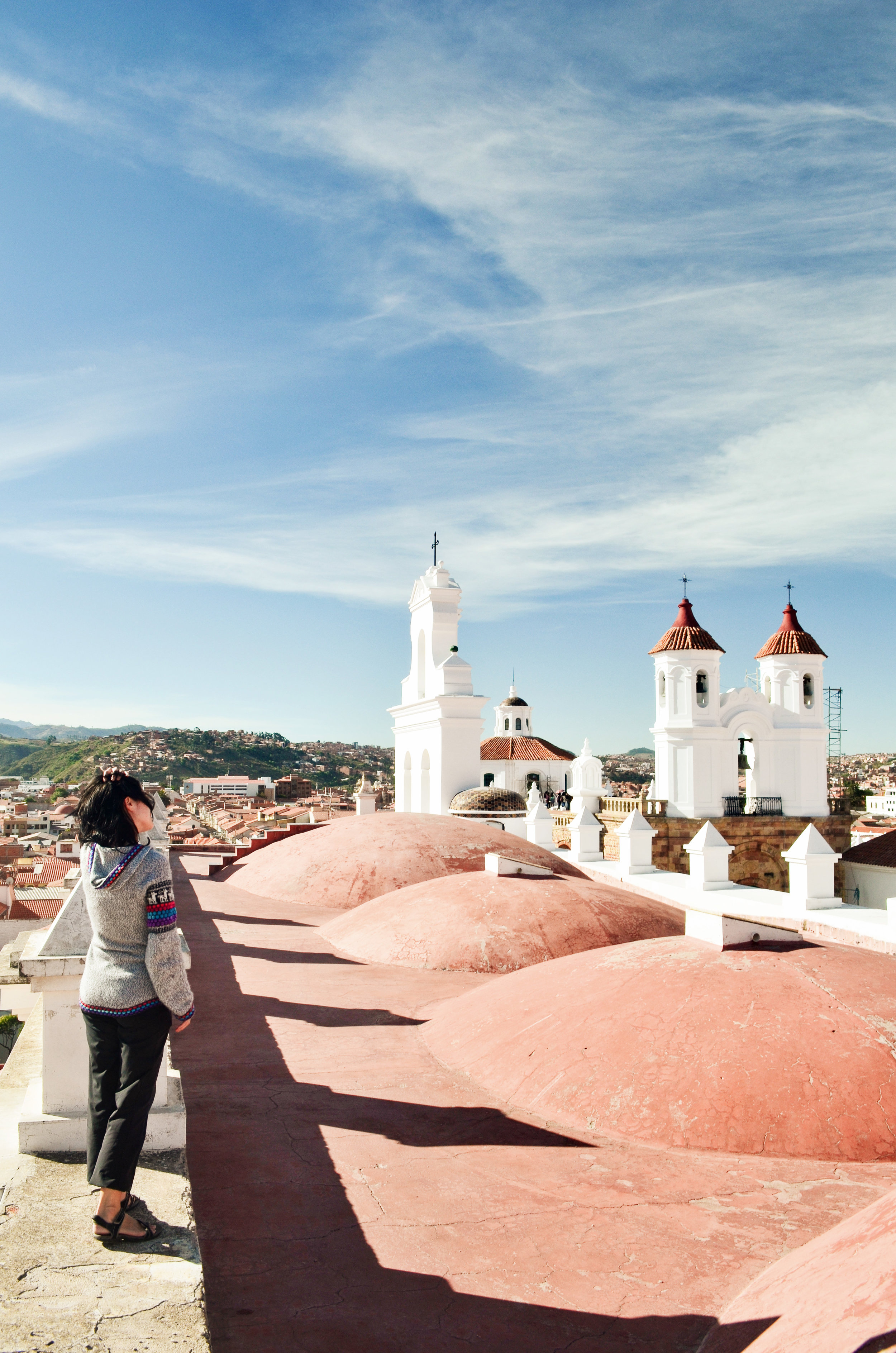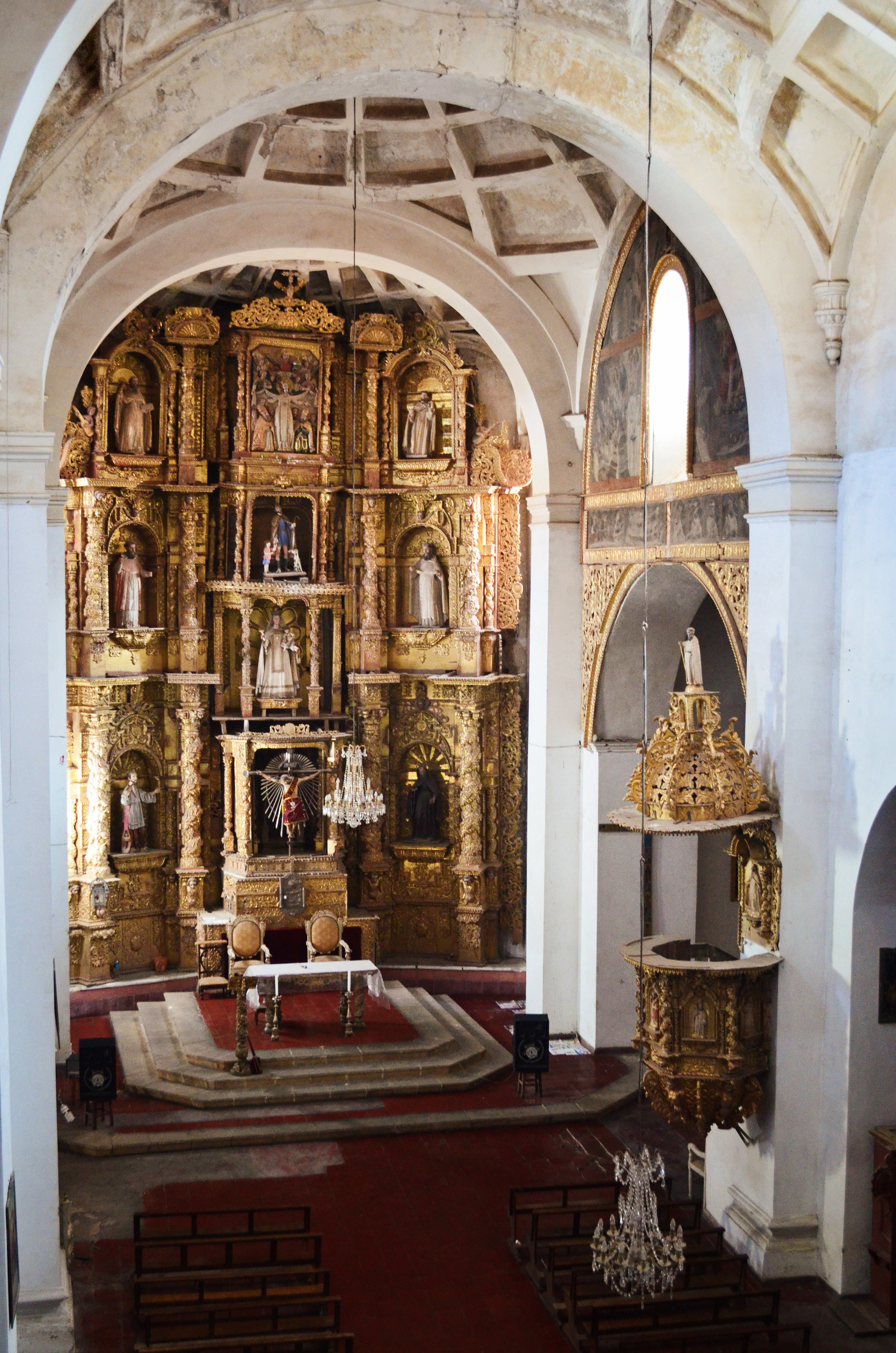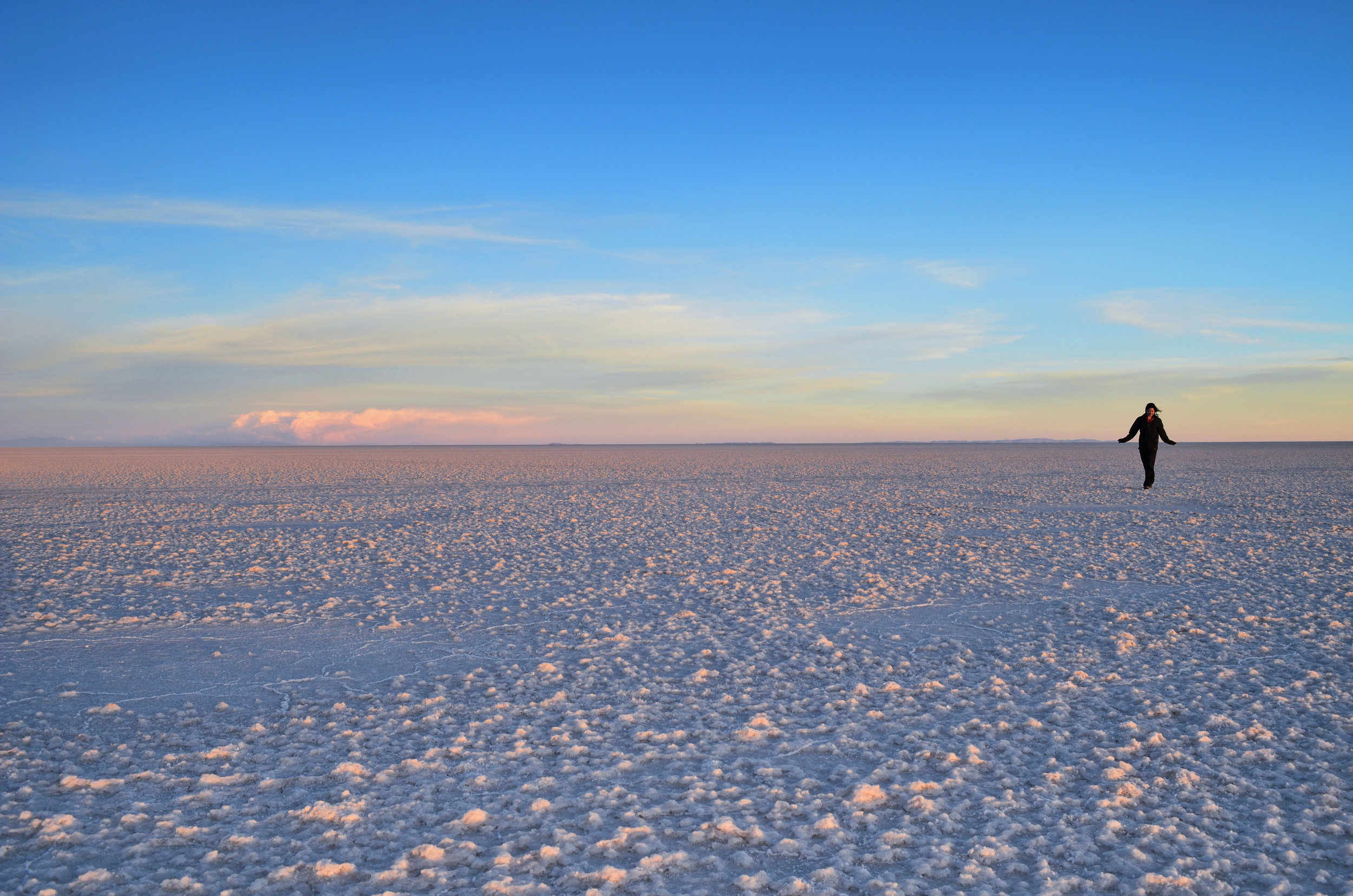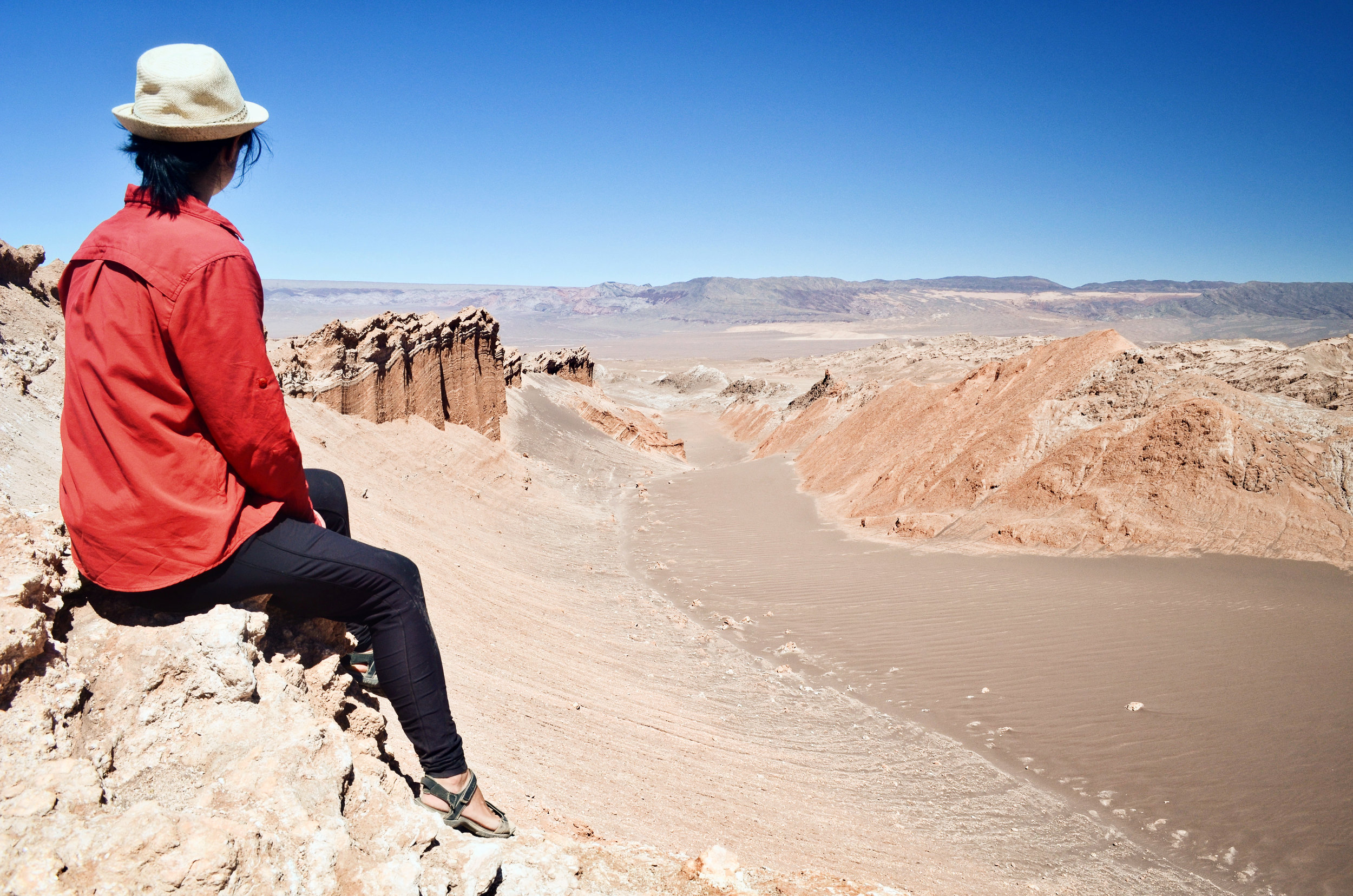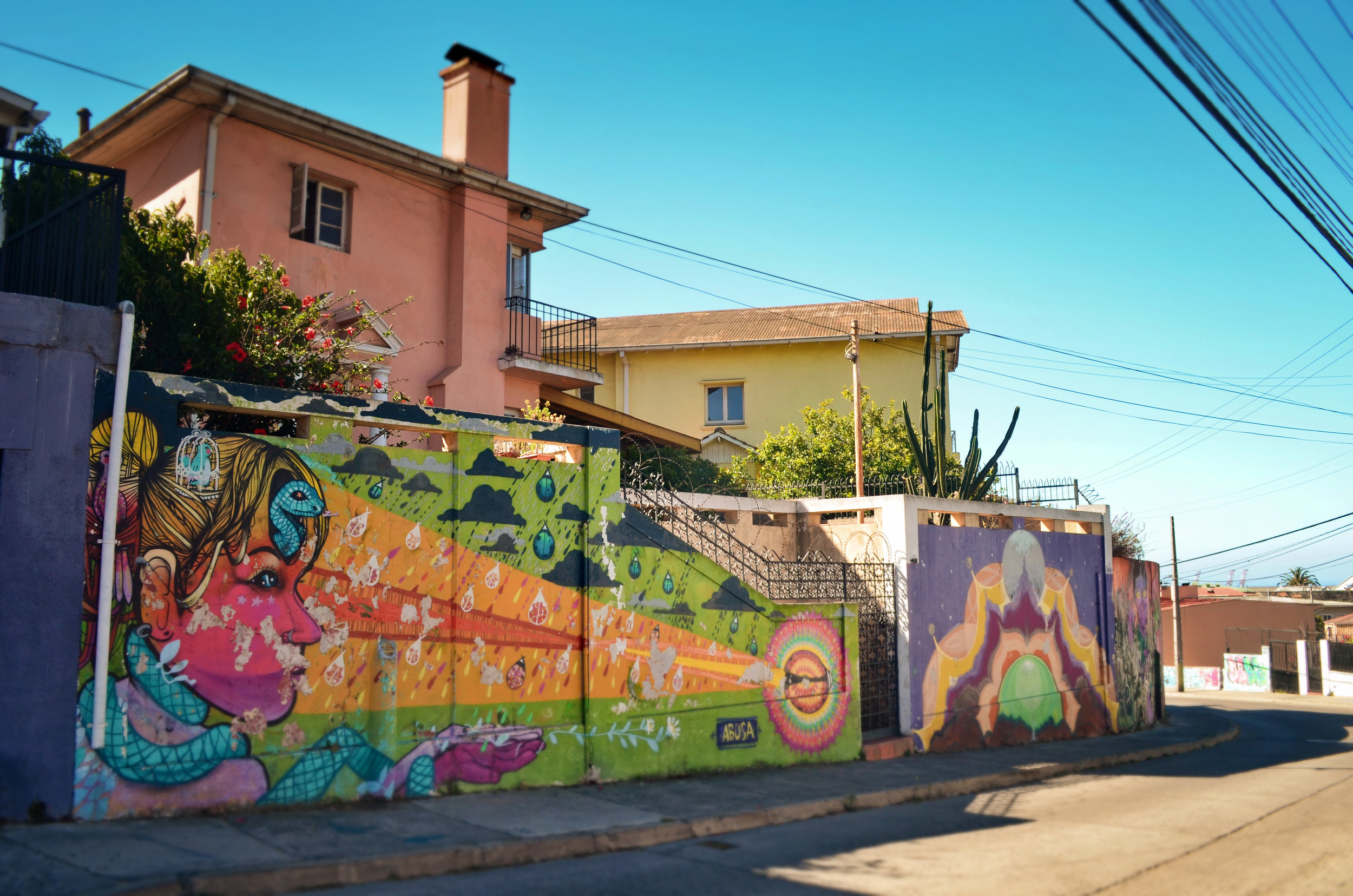Reflections: December 2018
We may not have seen much snow in December, but we started the month is Sucre, Bolivia’s white city. Nearly every building in town is washed in white and trimmed in terracotta tile roofs. The pace of life was slow, and the days were long and sunny. Though the temperature regularly hit the mid-70s, it was starting to feel a bit like the holidays. The town center was decked in twinkling lights, and choruses of elementary school children dressed as little angels sang in the plaza.
We spent our days nibbling on artisanal chocolates and gorging on Venezuelan arepas. Rebecca’s brother Richie had only become familiar with the much drier and blander Colombian arepa, and once we introduced him to what had become one of favorite foods, his world was forever changed. When we discovered Sucre had a Venezuelan restaurant in town serving up juicy, savory Pabellón arepas (sweet corn masa stuffed with shredded beef, black beans, salty cheese, and fried sweet plantain), we developed a routine of visiting twice a day. Yep, it was that good.
After stuffing our faces with arepas, we’d wander the calm streets to lookout points around the city. One of our favorite walks led us to the General Cemetery, which has to be the most beautiful burial grounds we’ve ever seen. Gardens lined with tall trees, the sweet smell of fresh flowers hanging in the air, and altars decorated with personal offerings gave it such a peaceful atmosphere. On our way back to town we stopped by Templo La Merced and climbed the old church’s bell tower for 360-degree views of the city.
From Sucre, we took an overnight bus to Uyuni, where we’d start a three day trip across the salt flats from Bolivia into Chile.
The Salar de Uyuni is the largest salt flat in the world and is without a doubt one of the most spectacular landscapes we’ve ever seen in our lives. Every day brought new vistas and adventures, and our guide Eusebio went above and beyond to make sure we enjoyed this Bolivian treasure to the fullest.
Our first day we drove from the unremarkable town of Uyuni to the train cemetery. Trains once used to carry salt to the rest of Bolivia, Chile, and Argentina retire in the desert in a mass of rusting metal. The discarded steam engines look like something out of Mad Max, and people climbed through and on top of the cadavers. Shortly after, we hopped back in the 4x4 and headed into the salt flats.
We stopped for lunch near the Dakar Rally monument. All around South America, we had seen the symbol pasted on the sides and windows of cars without knowing the reference. The Dakar Rally is an annual race that traditionally took place from Paris, France to Dakar, Senegal, but because of security threats in Mauritania, the race has been held in South America since 2009. The rally takes place in difficult to navigate terrains like sand dunes and mud, so the Bolivian salt flats are a fitting site for such a sport.
After lunch, we drove into the seemingly endless salt flats. Situated at nearly 12,000 feet above sea level, this was once a prehistoric lake that went dry, leaving behind an impeccably flat 4,000 square miles of land made of salt. In the dry season, this gives visitors the perfect environment to take some fun perspective photos. In the rainy season, it turns into the world’s largest mirror. In either case, it is one of the most breathtaking landscapes, especially at sunrise and sunset. After we took some perspective photos, we then made our way to Inkawasi, an island of rock and cacti that appears out of nowhere in the inhospitable land. In Inca times, this island was a refuge from the Spanish conquistadors, and up until just a few years ago it was still surrounded by water. Because of climate change, the salt flats are loosing the little water that remains, and today the island is surrounded by only salt.
While many other groups headed straight from Inkawasi to their accommodation for the night, our guide was happy to drive the truck into the salt flats to let us watch one of the most spectacular sunsets we’ve ever seen. We opened a bottle of wine and watched the sun slowly sip behind a volcano and the sky turned into soft shades of purple and pink.
The next day we were up at 5:30 am. After a quick breakfast, we were back in the truck and ready to visit the volcanoes and lakes of this region. We saw hundreds of flamingos, a vizcacha (a rodent that looks like, but isn’t related to, a rabbit), and even a family of ostriches. The rainbow mountains and colored lakes were a complete contrast to the flat, white landscape we’d seen the day before.
Our final day was an even earlier start, as we woke at 3:30 am to arrive at the geysers for sunrise. We’ve been lucky to see geysers in Iceland and Yellowstone, but these were overwhelming. We walked through a maze of bubbling mud pots and venting steam. Afterwards, we drove a bit further and caught the first golden rays of sun in an outdoor thermal bath. It was the end of our time in Bolivia, and before we left we were already making plans to come back to this special country. That afternoon we set off for Chile.
We descended from the geysers at 16,000 feet above sea level to the Atacama Desert at 8,000 feet. In just a 45 minute drive we’d gone from freezing cold to dry heat. The next few days were spent seeking the little bit of shade in our hostel’s courtyard and guzzling liters of water. In the driest place on earth outside of the Arctic and Antarctic, we felt nature’s unforgiving assault on our bodies. The UV index in the Atacama Desert regularly reaches over 25, and even with sunscreen, sunglasses, and hats on, we felt the sun’s powerful rays cooking our skin. Within minutes of drinking water, our throats felt dry and scratchy. And it was in this environment that we had the outlandish idea to rent bikes for a day and cycle 10 miles out into the desert.
The Valley of the Moon looks just like its namesake. This inhospitable landscape of sand and stone extends as far as the eye can see, and in the horizon in every direction are volcanoes. The colors are a blend of white, yellow, and red, and the textures range from smooth sand to craggy rock. After biking and hiking through dunes and around beautiful stone pillars, we were thirsty and exhausted. It was a short ride by our standards, but the afternoon sun made us very aware that we were small creatures with earthly needs, and we were not fit for life on the moon.
After days of seeking shade and nights spent stargazing at the Milky Way, it was time to part ways with Rebecca’s brother. We were continuing much further south into Chile, and he had to be back in La Paz for a flight home in a few days. Saying goodbye in Chile this time was easier than saying goodbye months ago in Colombia. When he left Colombia after two and a half months backpacking with us, none of us knew he’d eventually meet us again in Peru, and we still hadn’t bought our plane tickets back to the US. Back in Colombia, we didn't know the next time we’d see each other. When he left Chile, we knew we’d see him when we head back home in March 2019. So, off we went to the bus terminal. Our next stop was a 24-hour bus ride almost directly south to Valparaíso.
We won’t mince words here. Entering Chile after spending 15 months traveling around countries like Mexico, Guatemala, Peru, and Bolivia felt like culture shock. The Atacama Desert was outrageously expensive by most Latin American standards, and normal travel events like finding lodging and buying bus tickets was much more organized than we were used to. It wasn’t a place where we could just show up to a bus terminal and buy a last minute ticket to our next destination and find reasonable accommodation upon arrival. We had to do something we’d gotten used to not doing: planning. We normally thought a few days in advance, but Chile and Argentina were forcing us to make arrangements weeks in advance. Add in the lack of street vendors selling everything from empanadas to phone chargers, and we were out of our element. Everything felt more formalized, and frankly, a lot like the US. We were stressed and a little depressed in this new place. Thankfully, the colorful streets of Valparaíso helped bring our spirits up.
Valparaíso is a port town on Chile’s coast whose hills have long been home to poets and artists. Walking around the narrow, windy, rundown streets feels like walking through an open air museum. Beautiful street art of poems and paintings cover most facades, all made more magical with cafés and shops populated with quirky characters. As soon as we got to Valpa, we knew we had to stay longer than originally planned. So we extended our stay and spent days napping on the beach, cooking fresh seafood bought that morning from the fish mongers, wandering the many streets and hills of the city, and enjoying delicious but ridiculously cheap Chilean wine on our balcony at sunset. We were slowly figuring out Chile, and we liked it.
Eventually, it was time to head to Argentina. We were moving faster this month than usual, but Chile and Argentina are big countries and if we ever wanted to make it to Patagonia with a reasonable amount of time for trekking, we had to keep moving. Since Rebecca’s birthday is three days before Christmas, and since being away from family during the holidays hits us pretty hard, we decided to spend a week in Mendoza and splurge a little. So we rented a little hotel suite in the heart of Argentina’s wine capital and treated ourselves to some of the city’s finest food and beverage, which, despite being expensive by Argentinean standards, was an incredible deal for people holding dollars. Argentina has been rocked by economic instability since 2010, and just six months before we’d arrived, the peso had been devalued by 50%.
For Rebecca’s birthday, we went to Casa el Enemigo, the best rated restaurant in Mendoza, and it did not disappoint. Argentina is a country of culinary indulgence, and in addition to being world-renown for its incredible wines, also produces some of the best beef on the planet. Whether it’s a simple choripan for lunch (a tasty chorizo in a bun topped with chimichurri sauce) or a hearty rib-eye, Argentina takes its meat very seriously. Barbecuing is a right of passage here, and every Argentinean takes pride in building wood-burning grills and skillfully cooking various cuts of meat. Add in the fact that most of Argentina is covered in pampas (plains) and you get some of the highest quality grass-fed beef. We may not usually be meat eaters (at home, we tend to be vegetarian), but it’s impossible to pass up a steak or a chorizo in Argentina. And at Casa el Enemigo we were treated to the finest. Osobuco empanadas, pork chorizo, 12-hour cooked ribs, and a rib-eye plus nine different wines from the vineyard had us drooling for days.
Since Christmas is a low-key family affair in much of South America, we stocked up on bottles of fine Mendozan wine, grabbed a selection of cheeses, salamis, crackers, olives, and a bottle of locally made Malbec honey, and planned to spend Christmas curled up in bed calling our families. It was nearly 100 degrees in Mendoza on Christmas Day, but a small piece of us felt like we were back home, next to the fireplace, snacking before Christmas dinner with our families.
Our next stop after Mendoza was a 24-hour bus ride south to the charming mountain town of Bariloche. Whenever we told people in Mendoza that we were going to Bariloche, their eyes would get dreamy. “Ah, Bariloche! Es hermoso!” And by our first impressions of the town, they were right. Located on the shore of Lake Nahuel Huapi and surrounded by snow-capped mountains and more lakes, it’s the perfect place for a nature getaway. In the winter, people flock to the slopes to ski and snowboard. In the summer, people kayak in the glacial lakes and trek in the mountains. And the town itself is dotted with more breweries and chocolate shops than we could count.
The year was coming to an end and over pints at different local breweries, cones of artisanal ice cream, and a variety of choripan, we reflected on what was, without a doubt, the most magical year of our lives to date. January 1, 2018, we were in the Yucatán in Mexico about to start our open water dive certification. Between then and now, we’d traveled more than 12,200 miles almost exclusively by land and in every type of vehicle in all kinds of conditions. We’d crossed twelve borders, stayed in 51 different towns and cities, and ate God knows how many plates of rice and beans. We’d camped next to an erupting volcano in Guatemala, paraglided in the mountains of Colombia, dove with hammerhead sharks and killer whales in the Galápagos, hiked to Machu Picchu, traversed the Bolivian salt flats in a 4x4, and stargazed at the Milky Way in Chile’s Atacama Desert. And in between all the monumental highlights were the every day adventures of tasting new food, forging new friendships, wandering through markets, and hiking around mountains and valleys. There were also lows like getting sick in Peru and ripping off a couple of toenails surfing, plus missing our cat, friends, and family back home. It was a hell of a year, and it’ll be difficult to top it, but we’re up for the challenge. 2019, we’re ready.



